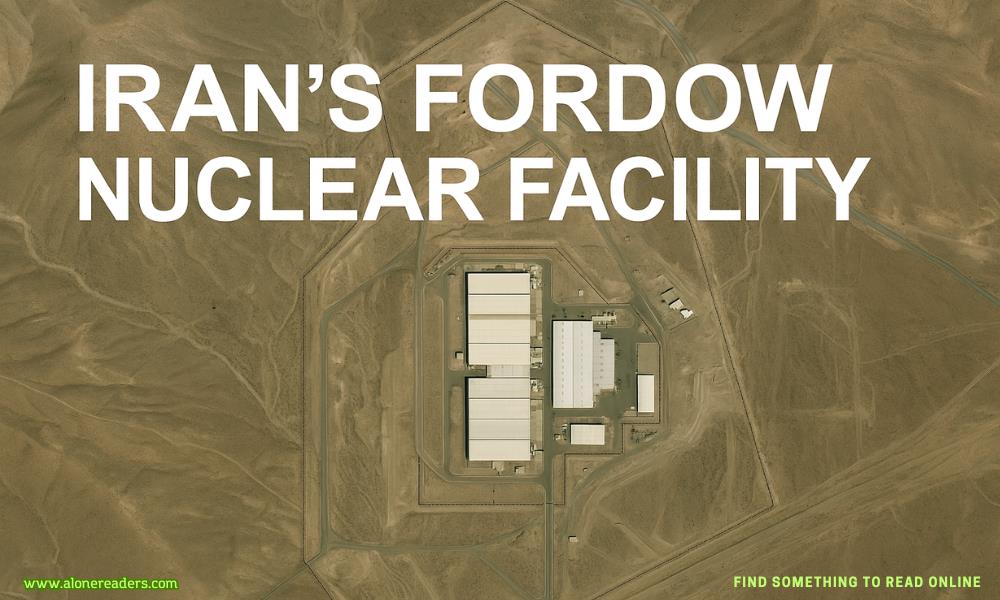
Deep beneath the mountains of Iran, the Fordow Fuel Enrichment Plant represents one of the most fortified and strategically significant components of Iran’s nuclear infrastructure. Located just 30 kilometers northeast of Qom, the site is not only difficult to access due to its mountainous shield but is also at the center of ongoing geopolitical tensions, raising urgent questions about whether it can be neutralized by military force—particularly by the United States or Israel.
Originally a military base for the Islamic Revolutionary Guard Corps, Fordow was converted into a nuclear site in secrecy. Iran only acknowledged its existence to the International Atomic Energy Agency (IAEA) on September 21, 2009, after Western intelligence had already discovered its purpose. The facility's location deep within the mountains—reportedly hundreds of meters underground—makes it uniquely resistant to conventional airstrikes.
By September 2009, intelligence indicated Iran was preparing to install up to 3,000 centrifuges at Fordow. Although Natanz remains Iran’s largest nuclear site with capacity for around 50,000 centrifuges, Fordow is of greater concern due to its fortified placement and recent evidence of high-purity uranium enrichment.
Fordow gained notoriety as the only Iranian facility where uranium particles enriched to near weapons-grade levels have been discovered. An unannounced IAEA inspection in January 2023 found particles enriched to 83.7 percent uranium-235—alarmingly close to the 90 percent threshold required for weapons-grade material.
While Iran denied intentionally enriching uranium to such levels, it also failed to properly inform the IAEA about changes made to the design and configuration of centrifuge cascades—clear violations of its safeguards agreement. In March 2023, IAEA Director General Rafael Grossi confirmed that Iran had installed two sets of advanced centrifuges interconnected in a way that allowed higher enrichment levels than declared.
Under the 2015 Joint Comprehensive Plan of Action (JCPOA), Fordow was to be demilitarized for nuclear enrichment purposes. The agreement mandated that no uranium enrichment or research would take place at the site for 15 years. The facility was to be converted into a research and technology center, with over 1,000 centrifuges decommissioned and relocated to Natanz.
For several years, Iran complied—halting enrichment by January 2014 and diluting enriched uranium stockpiles. However, following the U.S. withdrawal from the JCPOA in 2018, Iran incrementally rolled back its commitments. The reactivation of Fordow's enrichment operations marks a critical point of nuclear escalation.
In 2016, Iran deployed a Russian S-300 air defense system over Fordow, signaling the site's perceived vulnerability and strategic value. This highly advanced missile system makes any aerial assault on the site an extremely risky proposition, especially for a country like Israel that lacks deep-penetration bomb technology akin to U.S. capabilities.
Although Israel launched missiles at Fordow in its recent air campaign—simultaneous with its successful strike on Natanz—no damage was reported by IAEA inspectors as of June 2025. Fordow remains fully operational.
Fordow’s greatest strength lies in its location—dug deep inside a mountain, heavily fortified, and protected by state-of-the-art air defense. Conventional munitions are virtually ineffective against it, and even bunker-busting bombs like those used at Natanz may not be sufficient.
The United States, however, possesses the Massive Ordnance Penetrator (MOP), a 30,000-pound bomb designed for precisely such hardened underground targets. Deployed from a B-2 stealth bomber, multiple MOPs could, in theory, collapse Fordow’s internal structure if they hit accurately and repeatedly.
But such a strike would not be simple. Not only would it require absolute air superiority, but it would also risk triggering a full-scale regional conflict. Former U.S. President Donald Trump, while still a central figure in U.S. foreign policy discussions, stated ambiguously in 2025: “I may do it. I may not do it.” This ambiguity underscores the high-stakes calculus involved in attacking Fordow.
Iran argues that enriched uranium particles discovered at Fordow may be the result of sabotage or contamination. In a letter dated June 3, 2025, Iranian officials claimed to have uncovered evidence suggesting a “malicious act” was responsible for the abnormal enrichment findings. However, the IAEA maintains that Iran failed to notify the agency of changes to Fordow’s technical layout—raising suspicions of covert nuclear development.
Furthermore, Iran’s lack of transparency surrounding the original timeline and purpose of Fordow continues to fuel distrust. The IAEA has never been provided with a full chronology of its construction or intended usage, despite repeated requests.
A direct strike on Fordow carries far-reaching implications for international diplomacy and regional stability. Unlike Natanz, Fordow is not just a nuclear site—it is a geopolitical flashpoint. If attacked, Iran may respond with widespread retaliation across the region, including against U.S. assets, Gulf nations, or even maritime routes.
Moreover, attacking Fordow without multilateral support risks collapsing what remains of international nuclear diplomacy. European Union countries have consistently advocated for restraint and the preservation of dialogue—even after the JCPOA’s partial collapse.
The Bottom Line: Strategic Stalemate or Imminent Escalation?
Fordow symbolizes both Iran’s nuclear ambition and the limitations of military options available to its adversaries. As long as it remains operational, fears of nuclear weapon development will persist. Yet, any strike designed to disable it must weigh success against catastrophic consequences.
In short, while the United States has the technological means to attempt a strike on Fordow, the risks of escalation—combined with the uncertain success of such a mission—make it a last-resort option. For now, Fordow remains intact, enriched, and emblematic of the unresolved nuclear standoff between Iran and the world.